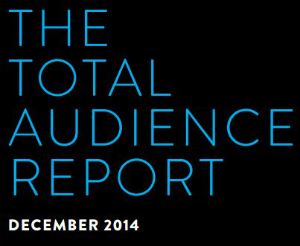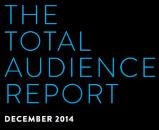
The newly angled report is consumer-centric, reducing the focus on platform importance. “Platformism,” or over-reliance on the values and metrics of delivery mechanisms, is under increasing criticism. In a market where consumers follow content without friction across boundaries that formerly kept platform silos apart from each other (e.g. watching a TV series via cable and Netflix at the same time), it makes sense for this quarterly benchmark report to center around consumer behavior, not platform performance.
“Increased opportunities for content discovery on digital platforms, through over the top services, or through media companies’ providing their content online, accessible across an array of devices, all provide a vast media playground for the consumer who is now in control of what they watch and when they watch it,” Turrill notes.
The report is mostly about video. AM/FM listening is included. As to streaming audio, Jon Miller, Director of Global Marketing, told RAIN: “The numbers include any listening to streams of AM/FM stations that were either captured by PPM encoding, or written down by diarykeepers in Diary markets. Satellite Radio is not included in PPM markets, but is in Diary markets where listeners write down listening to Sirius/XM. Other streaming services such as Pandora, Spotify, iTunes Radio are not included at this time.”
With the understanding that AM/FM listening documented in the Total Audience Report includes an undetermined amount of streaming, we can see that TSL (Time Spent Listening) has undergone a 1.7% drop across the total sample compared to Q3, 2013.
There’s a fair amount of media swirl today around that small drop. but the more interesting metric is teased out in the demographic breakout. There, we see that Millennials and digital natives (17-24 age group) fall away from AM/FM listening to a greater degree. While the next-older cohort (18-24) listens to AM/FM for 50:31 (hours:minutes) per month, the younger set clocks in at 35:56. The disparity widens greatly in older segments.
So the year-over-year TSL decline is marginal, but the generation-over-generation decline is substantial.

